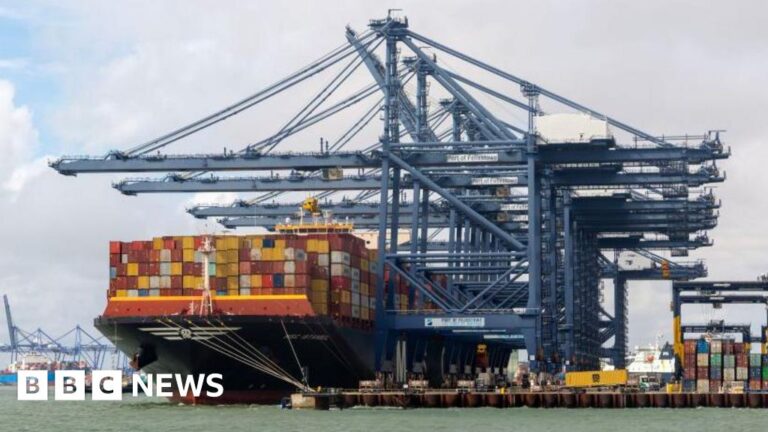Despite being the world’s most sanctioned country, Russia has continued to use its vast energy wealth to bankroll its war in Ukraine. US President Donald Trump is hoping to change that by announcing sweeping new secondary tariffs that will impact any country still trading with Russia if a ceasefire with Ukraine is not agreed by Friday, 8 August. India became the first country to be punished by the US over its purchase of Russian oil. Further secondary tariffs could see goods from any country that trades with Russia face a 100% tax when they are imported into the US. Oil and gas are Russia’s biggest exports, and Moscow’s biggest customers include China, India, and Turkey.
President Trump said, “I used trade for a lot of things, but it’s great for settling wars.” This would not be the first time the Trump administration has imposed secondary tariffs, which are also in place to punish buyers of Venezuelan oil. However, using them against Russia would have far bigger implications for the global economy. Russia remains the world’s third-biggest oil producer, behind only Saudi Arabia and the US itself. But its shipments have been falling this year, according to a Bloomberg analysis of ship-tracking data.
The key channel by which secondary tariffs on buyers of Russian energy could impact the global economy would be through the level of energy prices. If the tariffs work, they will cut the flow of Russian oil and gas to global markets. And with less supply, prices could go up, just as they did when Russia launched its full-scale invasion of Ukraine in 2022. That led to a spike in inflation around the world. President Trump says he isn’t worried because of record US oil production.
India has been the second-biggest buyer of Russian oil, according to the Centre for Research on Energy and Clean Air. President Trump told US outlet CNBC, “They’re fuelling the war machine. And if they’re going to do that, then I’m not going to be happy.” A day later, Trump signed an executive order hitting India with an additional 25% tariff over its purchases of Russian oil and raising the total tariff on Indian imports to the US to 50% – among the highest rates imposed by the US.
If secondary sanctions take effect in 21 days’ as Trump’s executive order specifies, US companies buying goods from India will have to pay a 100% import tax – or tariff – when those products reach US shores. The idea is that it makes these goods so expensive that US businesses will choose to buy them cheaper from elsewhere, resulting in lost revenue for India. That, in turn, is supposed to deter India from buying Russian oil. And if Russia is left unable to sell its oil elsewhere because other countries face the same predicament, it will have less cash to finance the war in Ukraine.
One way in which Americans could experience higher prices as a result of new secondary tariffs is in their purchase of mobile phones from India. US firm Apple is moving much of its iPhone production to India – in particular the manufacturing of handsets that it wants to sell in the US. If these products are subject to the new tariffs, prices could rise significantly for US consumers. That is because tariffs are paid by the companies that import goods – and those companies tend to pass most, if not all, of their cost increases on to their customers.
China is buying the most Russian oil, and a decision by President Trump to impose secondary tariffs on Chinese goods would be much more challenging to fulfil. That’s because US imports from China are worth five times as much as those from India, and a lot more of those imports are consumer goods such as toys, clothes, and electronics. Secondary tariffs aimed at Beijing would also risk upsetting a much broader renegotiation of trade between the world’s two biggest economies that Trump has been pursuing since his first term in office.
The US-EU trade relationship is the biggest in the world, and the pair have just negotiated new trade terms which will see a 15% tariff be applied on most EU exports to the US. Many in the EU criticised that deal, saying the tariffs would harm European exporters. Now they also fear that secondary sanctions on the EU could do even more harm. Adding 100% tariffs for buying Russian energy could significantly reduce the amount of goods sold by the EU to the US.
Russia’s own economy has so far proven remarkably resilient since the full-scale invasion of Ukraine began, growing 4.3% last year. However, Economy Minister Maxim Reshetnikov recently warned that the country was “on the verge” of recession after a period of “overheating”. The International Monetary Fund (IMF) is forecasting growth of just 0.9% this year. If the secondary sanctions are successful in reducing demand for exports, they will push Russia closer to recession.
Source link




